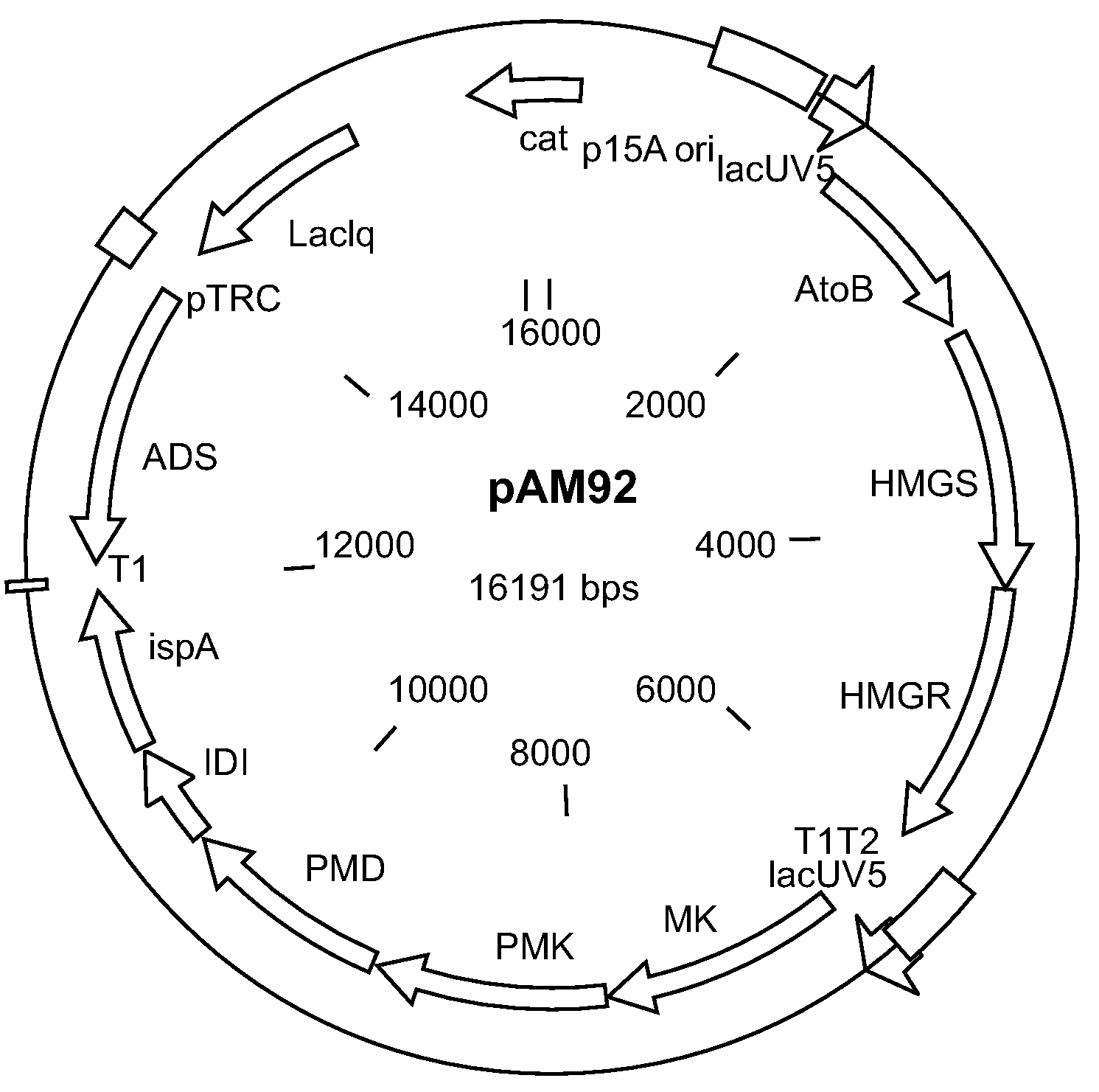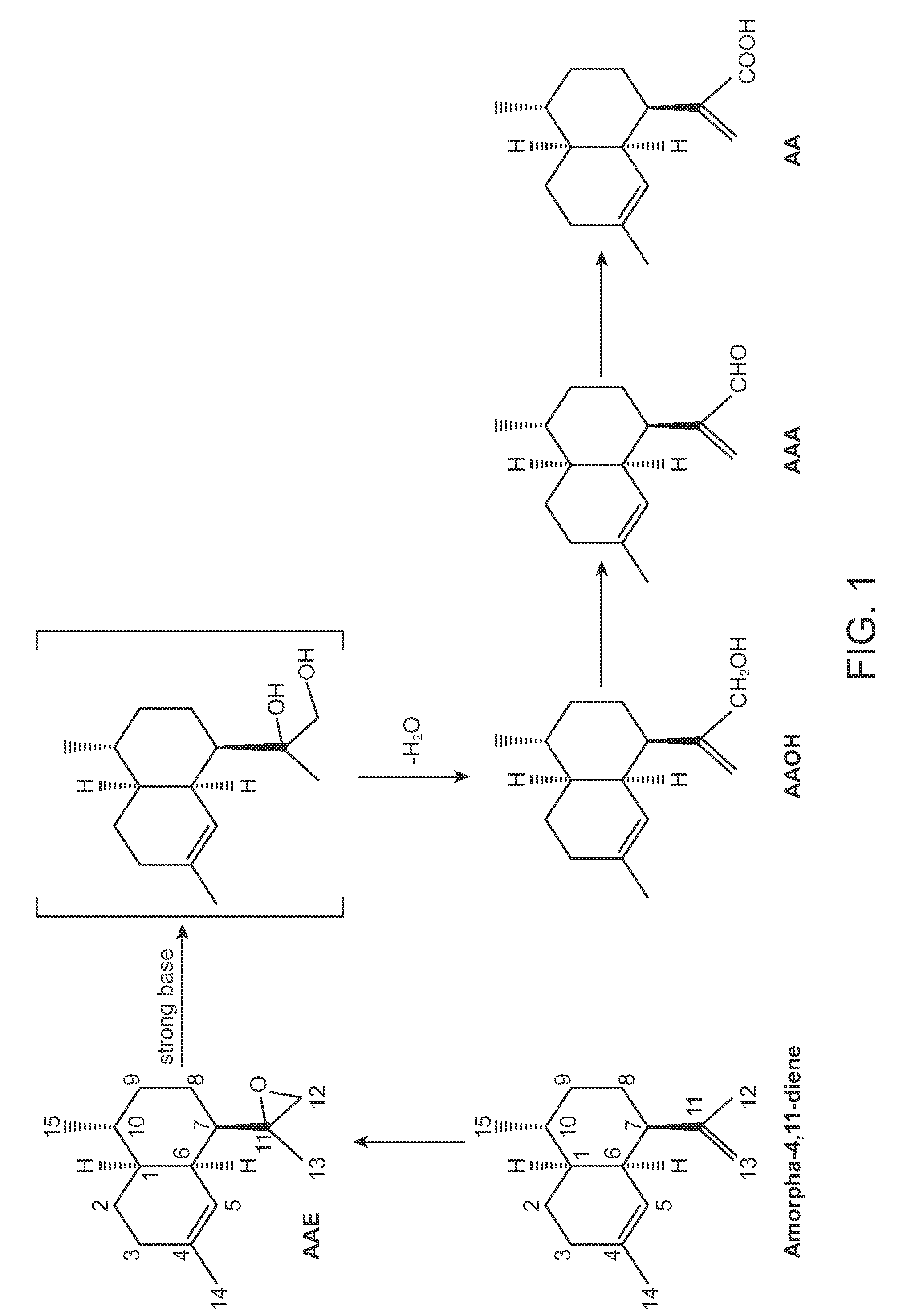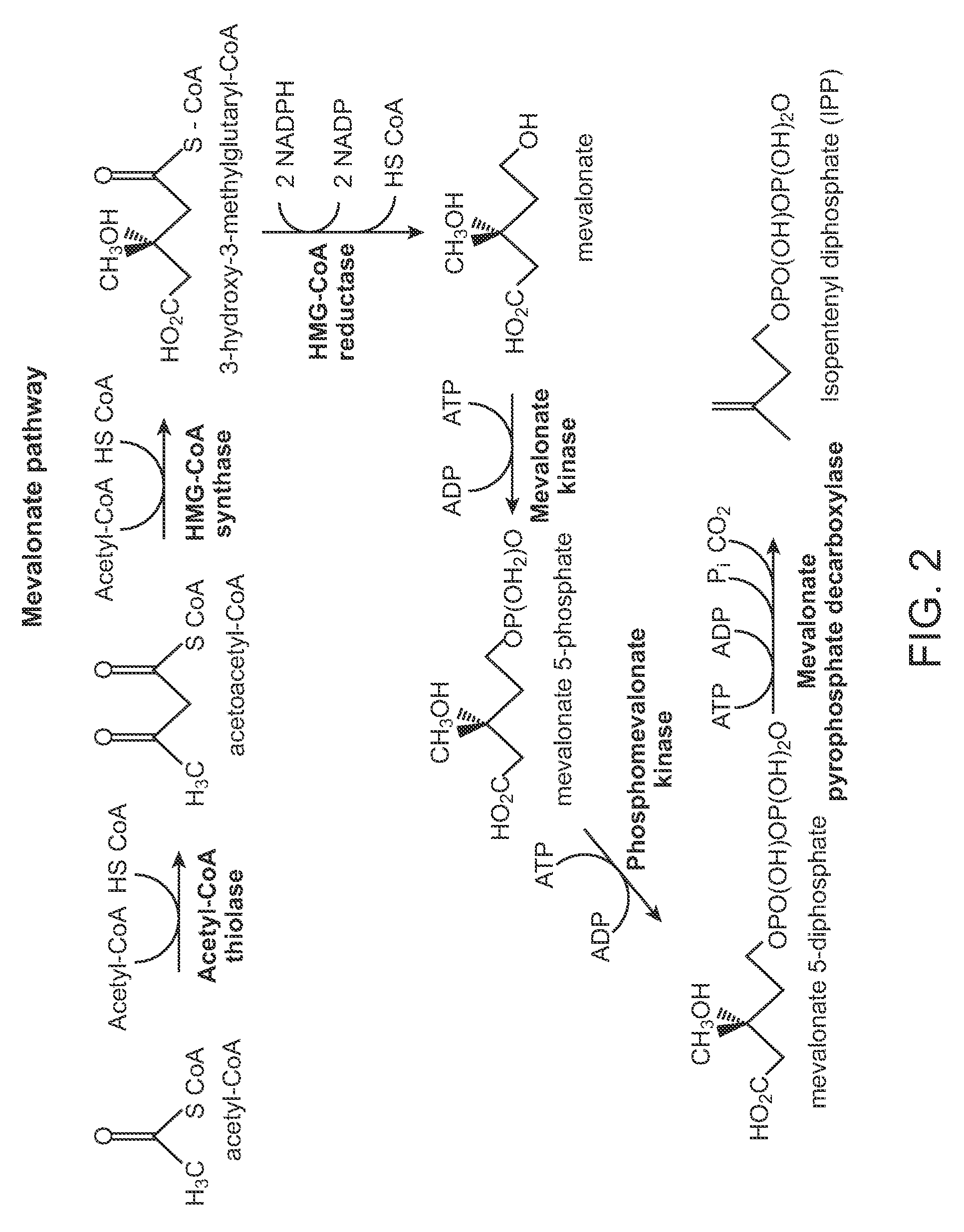Artemisinic epoxide and methods for producing same
a technology of artemisinin and epoxide, which is applied in the field of artemisininic epoxide and methods for producing same, can solve the problems of low yield, difficulty in isolating pure compounds, and production of sufficient quantities of artemisinin from natural sources
- Summary
- Abstract
- Description
- Claims
- Application Information
AI Technical Summary
Benefits of technology
Problems solved by technology
Method used
Image
Examples
example 1
Generation of Expression Constructs
[0214]Construction of pAM36-MevT66, pMevB-Cm, pMBI, pMBIS, pAM45, and pAM92 is described.
pAM36-MevT66
[0215]Expression plasmid pAM36-MevT66 was generated by inserting the MevT66 operon into the pAM36 vector. The pAM36 vector was generated by inserting an oligonucleotide cassette containing AscI-SfiI-AsiSI-XhoI-PacI-FsIl-PmeI restriction sites into the pACYC184 vector (GenBank accession number X06403), and by removing the tetracycline resistance conferring gene in pACYC184. The MevT66 operon encodes the set of MEV pathway enzymes that together transform the ubiquitous precursor acetyl-CoA to (R)-mevalonate, namely acetoacetyl-CoA thiolase, HMG-CoA synthase, and HMG-CoA reductase. The operon was synthetically generated and comprises the atoB gene from Escherichia coli (GenBank accession number NC—000913 REGION: 2324131.2325315), the ERG13 gene from Saccharomyces cerevisiae (GenBank accession number X96617, REGION: 220.1695), and a truncated version of...
example 2
Constructs Encoding Cytochrome P450BM3 (CYP102) or Variants Thereof
[0221]Expression plasmid pTrcBM3 was generated by inserting into vector pTrc99A a nucleotide sequence encoding the cytochrome P450BM3 of Bacillus megaterium, codon-optimized for expression in Escherichia coli (SEQ ID NO:5). A DNA fragment comprising this codon-optimized nucleotide sequence was generated synthetically, and inserted into the NcoI HindIII site of vector pTrc99A, yielding expression plasmid pTrcBM3.
[0222]Expression plasmids pTrcBM3-14-G1 and pTrcBM3-14-G3 were generated by substituting nucleotide sequences within pTrcBM3 that encode specific domains of cytochrome P450BM3. Specifically, the G1 variant comprises nucleotide substitutions that translate into a substitution at amino acid 87 from phenylalanine to alanine; and the G3 variant comprises nucleotide substitutions that translate into a substitution at amino acid 87 from phenylalanine to alanine, at amino acid 47 from arginine to leucine, and at amin...
example 3
Production of Artemisinic Epoxide from Amorpha-4,11-Diene Produced Via the MEV Pathway in Escherichia coli Host Strains
[0226]Host strains were created by transforming chemically competent Escherichia coli DH1 cells with pAM92 and pTrcBM3-14, pTrcBM3-14-G1, pTrcBM3-14-G3, pTrcBM3-G4(A328L), or pTrcBM3-G4(A328N).
[0227]Pre-cultured host cell transformants were inoculated into fresh Terrific Broth (TB) supplemented with 2% glycerol (v / v), 65 mg 1−1 δ-aminolevulinic acid hydrochloride (ALA), and 50 μg / mL each of carbenicillin and chloramphenicol. All cultures were inoculated at an optical density at a wavelength of 600 nm (OD600) of 0.05. Cultures were induced with 0.05 mM IPTG upon reaching an OD600 of 0.25. After 24 or 48 hours of culture at 30° C., 100 μL of culture was extracted with 900 μL ethyl acetate spiked with caryophellene (5 μg / mL) as an internal standard.
[0228]The organic layer was sampled and analyzed by gas chromatrography-mass spectrometry (GC-MS) using a Polaris Q gas ch...
PUM
| Property | Measurement | Unit |
|---|---|---|
| temperature | aaaaa | aaaaa |
| temperature | aaaaa | aaaaa |
| temperature | aaaaa | aaaaa |
Abstract
Description
Claims
Application Information
 Login to View More
Login to View More - R&D
- Intellectual Property
- Life Sciences
- Materials
- Tech Scout
- Unparalleled Data Quality
- Higher Quality Content
- 60% Fewer Hallucinations
Browse by: Latest US Patents, China's latest patents, Technical Efficacy Thesaurus, Application Domain, Technology Topic, Popular Technical Reports.
© 2025 PatSnap. All rights reserved.Legal|Privacy policy|Modern Slavery Act Transparency Statement|Sitemap|About US| Contact US: help@patsnap.com



